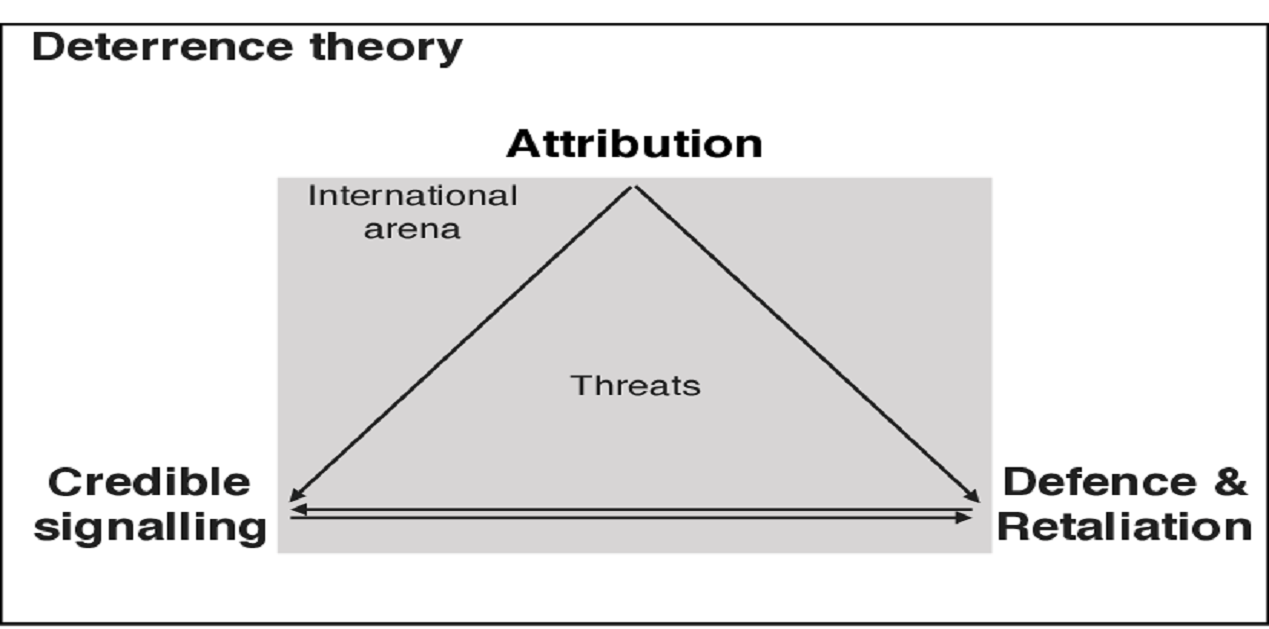This is an era of confused geopolitics. There were on horizon a transformation of West Asia, with Abrahams Accord, I2U2, Saudi-Iran thaw, IMEC; and then suddenly the fiercest of wars between Israel-Hamas with its other fallouts. The geopolitics of West Asia stands changed in a manner that returning back to that hopeful horizon seems impossible. In an era when conventional wars were deemed passé, Ukraine (supported by the West) and Russia are continuing the war for the last 21 months!
When consequent to the Nov 2020 truce on Armenia-Azerbaijan front and the strong diplomatic manoeuvrings thereafter, Azerbaijan has occupied Nagarno-Karabakh! In the background of trade wars and tensions over Taiwan, the US and China retain regular political interactions of the Principals and at Ministerial levels. President Xi Jinping tellingly remarked to President Joe Biden in San Francisco in Nov 2023, “for two large countries, like China and the US, turning their back on each other is not an option. And conflict and confrontation have unbearable consequences for both sides.” India and China too, despite the array of military forces on both sides of the LAC, have steadily growing economic trade!
Hence, strategic history clearly indicates that predicting future is hardly possible, and is fraught with serious dangers. Deterrence may attempt to discourage potential perpetrators by influencing their assessment of costs relative to potential gains, it too cannot assure peace. Diplomacy has immense credibility historically in resolving many an intransigent issue, confidence building measures established between adversaries can collapse too, unpredictably. Case in point is the Agreements and Protocols signed between China and India from 1993 to 2013 and the frequent political interactions stood jettisoned in May 2020!
Upsala University’s Conflict Data Programme of 2022 shows globally 2,38,812 deaths, of which 2,05,158 are clubbed under ‘State-based Violence.’ Wars, hence, are avoidable, but their existence is a bitter truth, and though some indicators may be evident, their unpredictability is also granted! Contextually, there are grave transitions that deserve consideration.
First, the concept of deterrence in India is one the most dominant, and to maintain the state of punition/dissuasion it is considered important to develop necessary strategic and operational capabilities. Any breakdown of deterrence is the inability to communicate to the adversary, availability of powerful offensive retributive capability, and the will to use the capability on crossing the red-lines or boundaries crossing considered unacceptable. Dissuasion on the other hand is convincing the adversary to stop a course of action without the use of force.
Is the world safer with deterrence or is this concept of deterrence waning? In a confrontational and expansionist environment, prevention by deterrence was the practicable way to war-avoidance. Obviously, new domains of warfare - space, cyber threats, hypersonic weapons, rockets, missiles and drones constitute new strategic threats that affect deterrence drastically. The concept of deterrence rests ultimately on the reality of human behaviour, that human beings would refrain from deliberate actions on the basis of cost-benefit analysis, contingent upon retribution.
Globally, in recent times there have been instances of failure of deterrence. The US failed to deter Russia from attacking Ukraine despite clear threats of a swift, severe and united response in the form of sanctions and strengthening deterrence by sending military support to Ukraine including the first tranche $450 million package in 2021. In West Asia, in Operation Protective Edge (Israeli offensive against Hamas in July-August 2014 and later), Israel’s objective was to restore deterrence, by thwarting attempts to build military capabilities, and ensure dire political and financial state. By Oct 2023, Hamas would have nothing to lose from escalation, thereby causing a failure of deterrence.
India has had adversaries who in varied times unmindful of deterrence capability, shown belligerence. Conventionally, Kargil 1999 and Eastern Ladakh 2020, terrorist attacks against Parliament 2001, Mumbai 2008, Uri 2016, Pathankot airbase 2016, Pulwama 2019 and Jammu Airbase 2021, are cases in point. Neither deterrence by punishment against one by threat of imposing consequences, nor deterrence by denial as a defensive block against another, helped! Indeed, terror attacks by terrorist groups are much more difficult to deter, as they have little to lose. Of course, the conventional deterrence is distinct from nuclear deterrence.
Deterrence would work only if the adversary appreciates the folly of his offensives in any and all domains. If the adversary views our offensive and/or defensive capabilities as weak or insufficient, has resources to use multiple domains against limited resources, can achieve political objectives regardless of own capabilities, and wins in public opinion, then deterrence will not work. There is seemingly a considerable decline in confidence in dependence on deterrence.
Second, the lines between peace and war have been blurred into irrelevance. The cliché ‘no war no, peace’ hereinafter does not restrict to counter-insurgency or counter terrorism, it is relevant through the continuum of threat-challenges in peace as much as war. Peace then are actually periods of preparation for conventional war, as also checking the bloodless wars that target the nation, executed by the adversaries in peacetime. India, in peace, hence remains in a state of challenges, undeclared and unending!
In peace, as in wars, nearly everything can be weaponised! It could be destruction of Nord Stream 2, the Kerch Bridge, the power sector in Ukraine, dam on Dnipro River, infrastructure in ports, terror attack on rave party on border of Israel and Gaza, or Al Shifa Hospital in war! It also includes unprecedented sanctions that froze over $300bn of Russia's gold and foreign currency reserves held in Europe and the US, and banned access to global banking transaction network SWIFT. There are also trade wars as Australia felt in November 2021, when China stopped wine imports. Of intelligence wars, they never get declared, nor do they even end!
These are visions of bloodless wars, where peoples suffer due to economic sanctions, denial of much needed vaccines, mouse becomes mightier than AK47, internet cables are mined undersea, disinformation targets societal cohesion, and onwards. With such ‘peacetime wars’ invasions are becoming unnecessary to bring inimical Governments to heel, when everything that can be weaponised, depending only on flights of imagination. Outside the comfortable state of war or state of peace binary, for India future is not so cut and dry, as the era will be of a state of ‘war’ in peacetime too. It is only a matter of scale and degree, and it has to be planned for.
Thirdly, assuredly wars are not inevitable; however, war, which is the use of organized force, will always be with there, and may be thrust upon unpredictably. Leo Tolstoy wrote in War and Peace that war is an inherent part of human nature and humanity will never completely get rid of it. The typology of conventional war in Ukraine, has confused the textbook, its hybrid warfare, with rapid concentration of regular forces at Ukraine’s border, the employment of unmarked special forces and mercenaries, operations by separatists in Eastern Ukraine, limited airpower, massive use of drones and firepower, steep increase in the gas, wheat and fertiliser prices and a massive propaganda campaign that sought to obscure the events on the ground.
Indeed, war avoidance remains the primary Indian national goal! It is argued that the kind of ongoing warfare aims to create ambiguities which will make decision-taking very difficult. In this ambiguous environment, various individual warfighting domains in India – the land, sea, air, cyber, electro-magnetic spectrum, space and informational, deem themselves to be separately and parochially, end-all. Each domain is critical to warfare, though not as much individually as conjointly by creating synergy!
Future warfare and role of domains of warfare can be incessantly debated. Historically armed forces usually fail to predict correctly the future character of warfare. Strategist Colin Gray had argued that, ‘all warfare is a race between belligerents to correct consequences of the mistaken beliefs with which they entered combat.’ Decisions on what kind of land forces need be created for the mid and long term, even before the future reveals itself, must be made now – assuming that the contemplation of future warfare would largely fall in place. However, with deterrence prone to failure, efficacy of CBMs questionable and intent of adversaries dubious with aggressive manoeuvrings in peacetime, the Government and the land forces in India do not have the luxury of easing-off on defensibility of disputed borders. Under normal circumstances, other domains may not even be deployable or employable, with war avoidance and escalation-control being paramount policy.
The presumptions on new military technologies in the realms of sensors and communication, PGMs, intelligence processing and sharing, cybernetics, artificial intelligence and the like have been promising revolutions for quite some time. Many of these technologies, some in nascent stages some matured, are being applied in Ukraine and in Gaza. India’s disputed borders are in the most difficult of terrain and troops on either side operate in by far adverse climatic conditions. That brings to fore the issue of land forces in positional defence across disputed borders. In a recent interview with The Economist, General Zaluzhny, the C-in-C of Ukrainian Armed Forces analysed the war as ‘stalemate’ due to the positional defence taken by the Russian Army. In a telling remark on the technology, he said, “Just like in the first world war we have reached the level of technology that puts us into a stalemate…There will most likely be no deep and beautiful breakthrough.” Trench’ sounds indispensable in mid-21stcentury, as it was in the beginning of the 20th; the issue however requires keen analysis!
In two fields there is consonance, achieving transparency of battlefield, and in firepower. The latter has outshone its prowess in Ukraine and Gaza. In an intense attack the Russian Multiple Launch Rocket system barrage included thermobaric warheads, air dropped mines and anti-tank munitions, against a single battalion headquarters in 2014. The attack destroyed equipment of two Ukrainian armoured battalions in three minutes.
Firepower hence is not about bean-counting of artillery pieces, artillery regiments and the ammunition availability! Future of firepower is with loitering munitions, portable drones and robotic technologies, longer range precision artillery, missiles and rockets, particle beam weapons, high-powered microwaves, lasers, electro-magnetic rail guns and hypersonics, and counter-drone technologies, all enmeshed together to offer ways to enhance speed, lethality and accuracy.
In sum, despite the uncertain fundamentals over timelines, opponents and how they would war-fight, over technology, political and economic contexts, India will have to base decisions on broad-based trend analysis. India has to set its political and military objectives foundations for longer term political goals before the strategic clock runs out. Multi-domain integration to fuse Services’ capabilities (also National) to orchestrate optimal synergised tempo across all domains and levels of war, has been much delayed by specious arguments. This synergy cannot wait; time is a critical military and political resource. Deterrence exists – but slender is the thread!
(The paper is the author’s individual scholastic articulation. The author certifies that the article/paper is original in content, unpublished and it has not been submitted for publication/web upload elsewhere, and that the facts and figures quoted are duly referenced, as needed, and are believed to be correct). (The paper does not necessarily represent the organisational stance... More >>
Image Source: https://www.researchgate.net/profile/Mariarosaria-Taddeo/publication/340918014/figure/fig1/AS:884158503088128@1587811222163/The-core-elements-of-deterrence-theory-and-their-dependences-This-figure-was-published.png











Post new comment